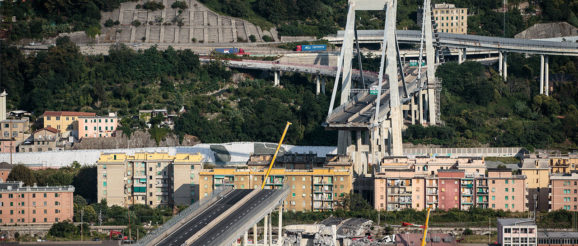Repair is as important as innovation

IN 1533 A noblewoman in Calais presented a visiting grandee with a peculiar gift: her personal toothpick, which, she was eager to point out, she had used for seven years. Whether it pleased her guest is not known, according to Hazel Forsyth, a curator at the Museum of London. But the story amused Ms Forsyth’s audience at last month’s “Festival of Maintenance”, a conference dedicated to keeping things in good nick.
Upgrade your inbox and get our Daily Dispatch and Editor’s Picks.
Events about making new things are ten a penny. Less common are events about keeping things as good as new. Maintenance lacks the glamour of innovation. It is mostly noticed in its absence—the tear in a shirt, the mould on a ceiling, the spluttering of an engine. Not long ago David Edgerton of King’s College London, who also spoke at the festival, drove across the bridge in Genoa that collapsed in August, killing 43 people (pictured). “We’re encouraged to pride ourselves on all being innovators and entrepreneurs,” he said. Maintenance is often dismissed as mere drudgery. But in fact, as he pointed out, repairing things is often trickier than making them.
It is also more difficult for economists to measure. The discipline’s most prominent statistic, GDP, is gross (as opposed to net) because it leaves out the cost of wear and tear. To calculate these costs, statisticians must estimate the lifespan of a country’s assets and make assumptions about the way they deteriorate. Some are like light bulbs, which work well until they stop altogether. Economists call this the “one-hoss shay” case, an allusion to a poem by Oliver Wendell Holmes. It imagines a horse-drawn cart built so well that it never broke down until it eventually fell apart, victim of “a general flavour of mild decay”.
Other assets are less poetic. Many are assumed to wear out in a “straight line”, deteriorating by the same amount each year. Others lose a steady percentage of their diminishing worth. Japan assumes that houses lose 4% of their remaining value each year. That may be one reason why the costs of wear and tear (or “consumption of fixed capital”) are reckoned to be so much higher in Japan (22% of GDP) than in many other countries, where houses are assumed to age more gracefully.
And how much do economies spend fighting decay? No one knows, partly because most maintenance is performed in-house, not purchased on the market. The best numbers are collected by Canada, where firms spent 3.3% of GDP on repairs in 2016, more than twice as much as the country spends on research and development.
At the festival, Mr Edgerton cited the old idea of “hydraulic despotism”: the argument that the tyrannies of the ancient East arose to force people to maintain fragile irrigation systems. In those societies, to repair was to repress. But some today have the opposite concern. They see maintenance and repair as a right they are in danger of losing to companies that hoard spare parts and information too jealously.
In March California became the 18th state in America to introduce a bill supporting the “right to repair”, by obliging manufacturers to make manuals more widely available to customers and independent repair shops. The European Commission has proposed something similar for dishwashers, washing machines and the like. Some think they have the right to repair public property, too. One speaker at the festival, who called himself the “guerrilla groundsman” and masked his identity with a helmet, described his surreptitious efforts to clean bridges and repaint signs in Cambridge without authorisation. In a disposable society, to repair is to rebel.
Correction (October 19th 2018): We previously stated that David Edgerton was at Imperial College London. In fact, he is at King’s College London. This has been amended.
